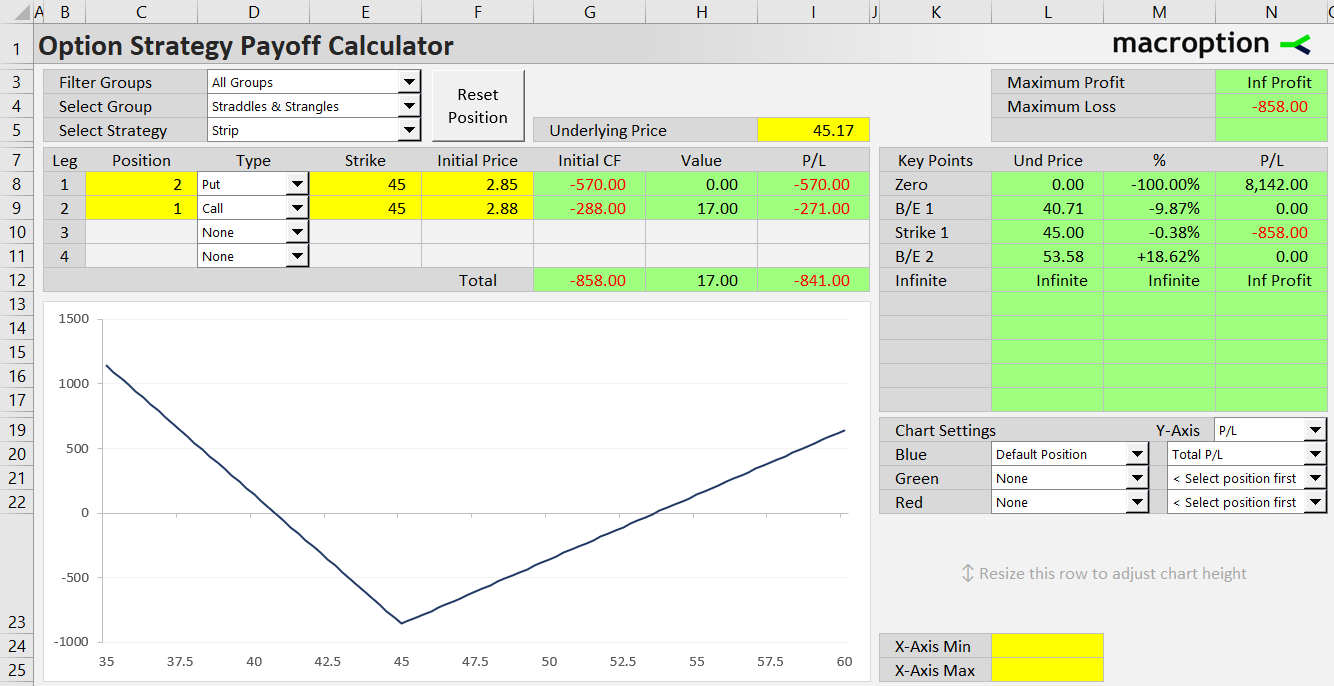Strip, a variation of long straddle with more puts than calls, is a long volatility option strategy with two legs (and a slight bearish bias). It has limited loss and unlimited potential profit.

Setup
For a position to be a strip, it must be long calls and puts on the same underlying, with the same expiration date and same strike price. Furthermore, the number of long put contracts must be greater than the number of long call contracts.
If it is smaller (more calls than puts), the strategy is called a strap. If the number of call and put contracts is equal, it is the classical long straddle position.
Ratio of Puts and Calls
The ratio of put and call position sizes can be anything: 2:1 is the most common, but 1:3, 2:3, 2:5, or generally anything else is also a strip strategy, as long as there are more puts than calls.
The more similar the put and call position sizes are, the more similar the total position's payoff and risk exposures are to long straddle. Conversely, when the number of long put contracts is much greater than the number of calls, the position becomes more asymmetric and directional.
Payoff
The payoff (profit or loss at expiration) from a strip position is very similar to a long straddle: V-shaped, with maximum loss exactly at the strike, and increasing profits as underlying price moves away from the strike.

Only difference between a strip and a straddle is that the payoff diagram is asymmetric – the slopes are different.
Because of the larger number of put contracts than calls, total profit increases faster when the underlying goes down.
When underlying price goes up, the strip position does eventually become profitable, but the distance of the break-even point from the strike is greater on the upside compared to the downside, as profit from the smaller number of long call contracts must offset the initial cost of both call and put contracts.
Exposure to Volatility and Time
All the important exposures – to underlying price direction, volatility, and time – are very similar to long straddle: Profits generally increase as the underlying moves away from the strike price or as volatility increases.
The position loses money as time passes or volatility decreases with underlying price staying close to the strike. Time decay is the worst enemy to a strip position.
Greeks
When underlying price is near the strike, a strip position has negative delta (due to the larger number of puts than calls).
A strip is always long gamma, as it only includes long options. This means that delta always changes in the same direction as underlying price.
When the underlying falls below the strike, strip delta becomes more negative (which benefits the position as long as underlying price keeps falling).
Conversely, when underlying price increases above the strike, total delta becomes less negative and eventually turns positive, as call delta rises and put delta approaches zero.
A strip position is generally long vega (volatility) and short theta (time).